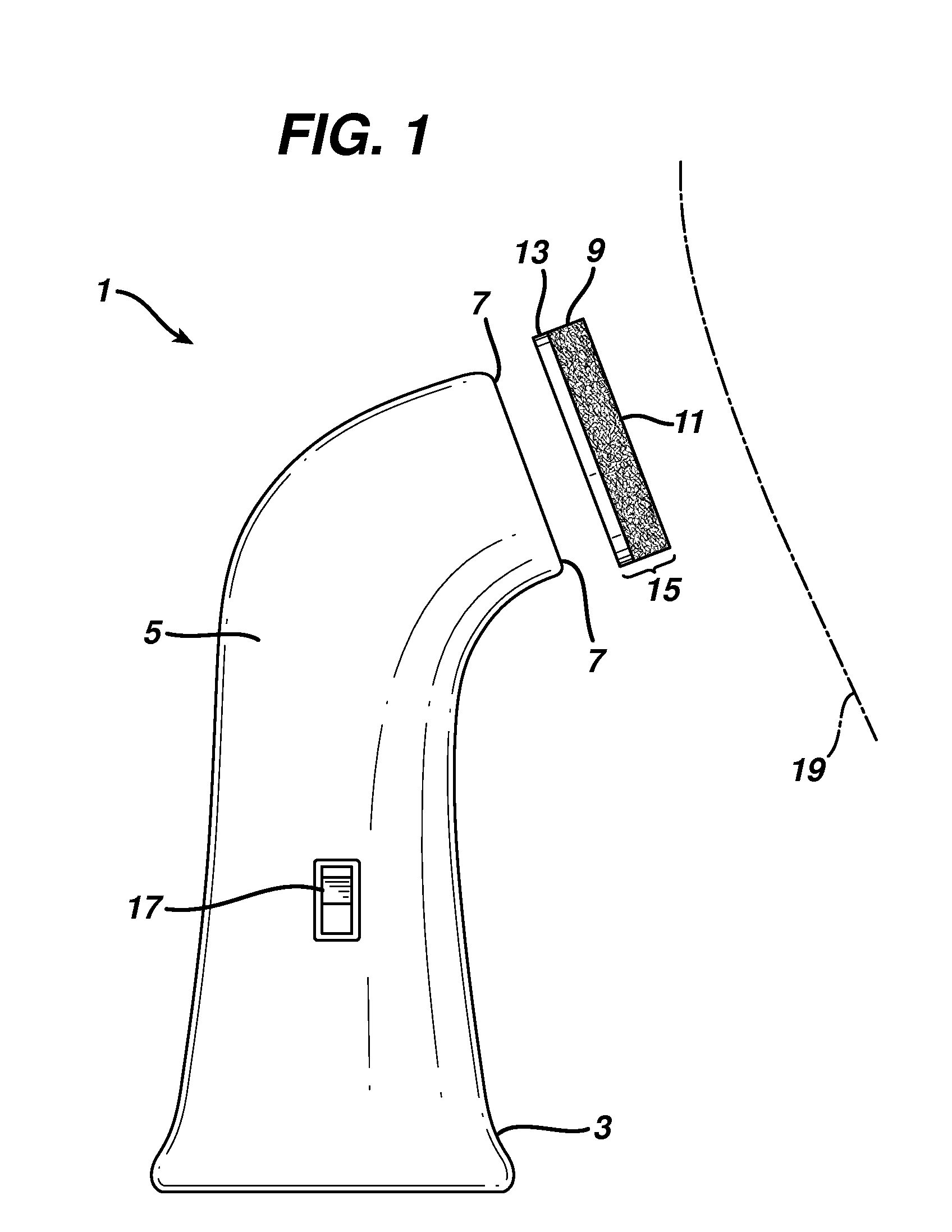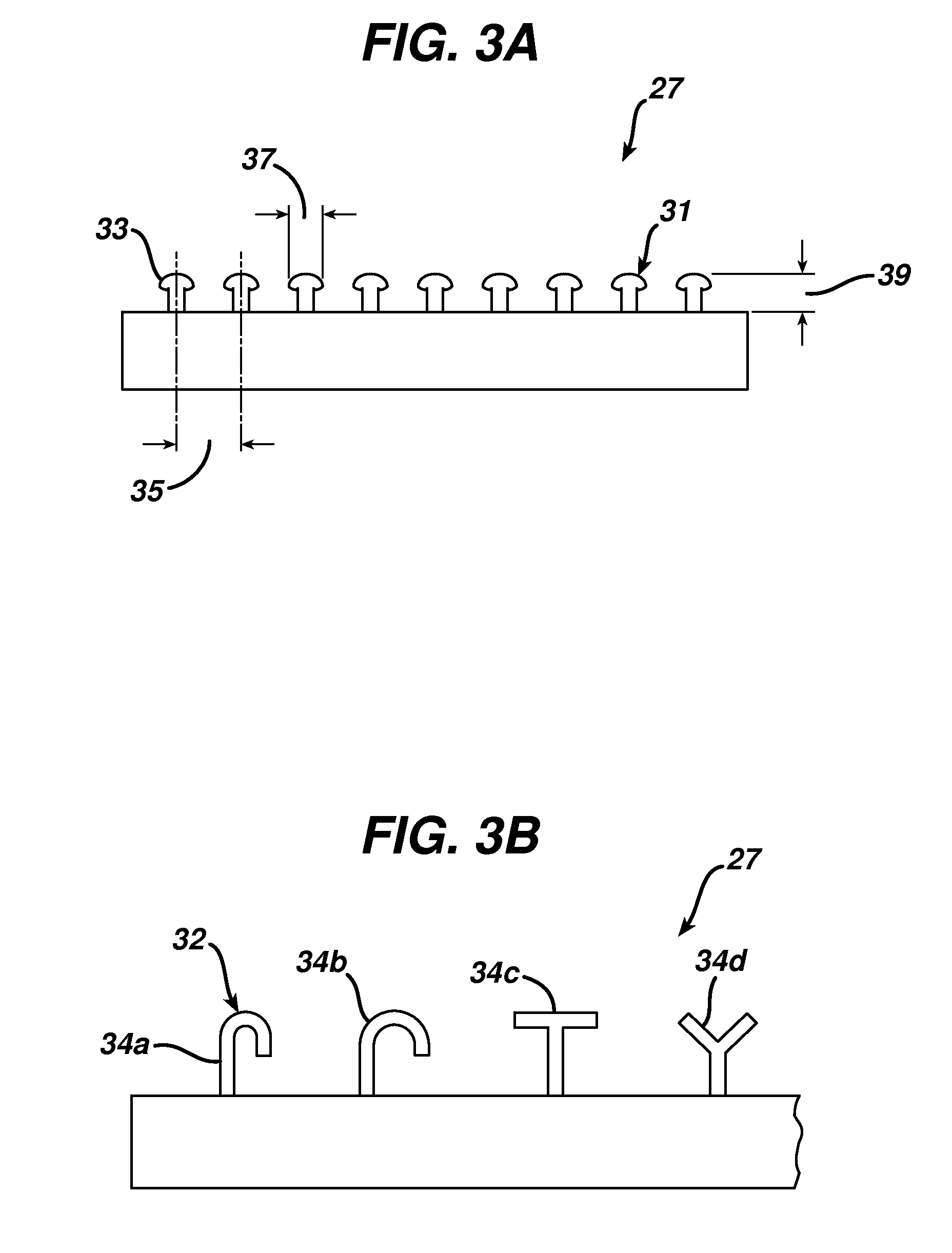Material for mechanical skin resurfacing techniques
a skin resurfacing and skin technology, applied in the field of mechanical skin resurfacing materials, can solve the problems of increasing the number of skin health problems, large portion of the population suffering from the associated effects of aging, and psychological stress in the patient, and achieve the effect of sufficient strength
- Summary
- Abstract
- Description
- Claims
- Application Information
AI Technical Summary
Benefits of technology
Problems solved by technology
Method used
Image
Examples
examples
[0108]The following examples relate to skin-contactable elements of the present invention. Other embodiments of the invention can be prepared in an analogous manner by a person of ordinary skill in the art.
examples 1-3
[0109]A freestanding fibrous, non-woven material (a needlepunched blend of 55% lyocell and 45% polyester, having a basis weight of about 200 gsm and a thickness of about 2.5 mm, available from Precision Custom Coating of Totowa, N.J., USA) was sprayed with an abrasive composition to form a skin-contactable element. The abrasive composition contained an abrasive system which was a blend of about 95.7% by weight of ABX 30 RESIN, (approximately 50% by weight of which is polymer), available from Celanese Corporation of Dallas, Tex., about 4% mica (Prestige Sparkling Silver with a particle size from 20-150 microns, available from Ekhart America L.P of Painesville, Ohio) and about 0.3% of polyacrylic acid thickener, ALCOGUM 296W, available from Alco chemical. Sufficient water was added to permit the composition to be sprayed onto the non-woven to provide a concentration by weight of abrasive system to non-woven described in the Table below. The non-woven with the composition applied there...
example 4
[0112]A skin-contactable element was made in a manner identical to Example 2, except that a cleansing composition (detailed below) was applied to the non-woven / abrasive composite rather than the conditioning composition detailed above.
Trade NameChemical Name% (w / w)Texapon NC70Sodium Laureth Sulfate15.0000Tegobetaine F-50Cocamidopropyl Betaine6.0000Plantaren 2000 NDecyl Glucoside5.0000Monateric 949JDisodium Lauroamphodiacetate7.0000Atlas G-4280PEG-80 Sorbitan Laurate20.0000Glucquat 125Lauryl Methyl Gluceth-101.0000Hydroxypropyldimonium ChloridePhenoxetolPhenoxyethanol0.9000Nipa ButylButyl Paraben0.0750Methyl ParabenMethyl Paraben0.1550Propyl ParabenPropyl Paraben0.1000FragranceFragrance0.6000Citric Acid anhydrousCitric Acid0.2000Carbowax PEG 400Polyethylene glycol10.9700Emery 917Glycerin33.0000
[0113]The PEG-80 Sorbitan Laurate and Disodium Lauroamphodiacetate were added together in a beaker and mixed until homogenous. The butylparaben, methylparaben, and propylparaben were added ther...
PUM
 Login to View More
Login to View More Abstract
Description
Claims
Application Information
 Login to View More
Login to View More - R&D
- Intellectual Property
- Life Sciences
- Materials
- Tech Scout
- Unparalleled Data Quality
- Higher Quality Content
- 60% Fewer Hallucinations
Browse by: Latest US Patents, China's latest patents, Technical Efficacy Thesaurus, Application Domain, Technology Topic, Popular Technical Reports.
© 2025 PatSnap. All rights reserved.Legal|Privacy policy|Modern Slavery Act Transparency Statement|Sitemap|About US| Contact US: help@patsnap.com



